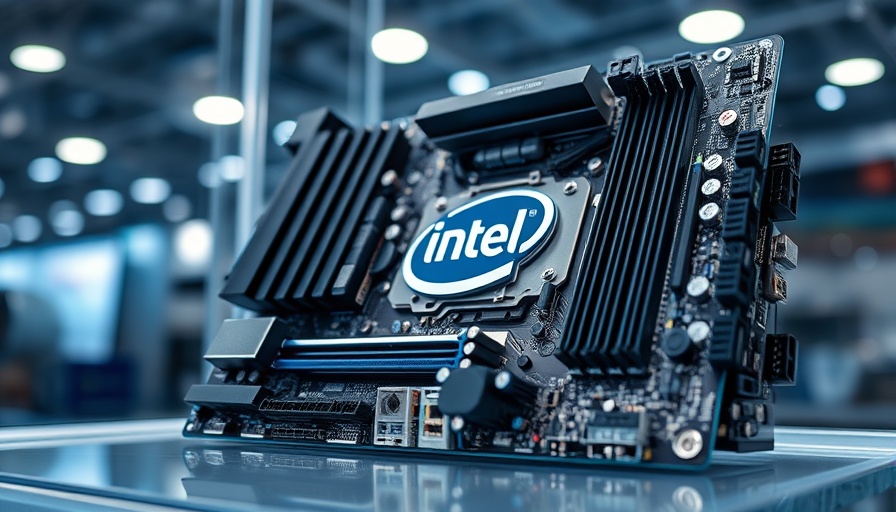
Intel's Leadership Shake-up: What It Means for the Future
As Intel Corporation grapples with significant challenges in the current semiconductor landscape, the departure of three senior executives signals a pivotal moment for the company. This restructuring comes under the guidance of newly appointed CEO Lip-Bu Tan, who aims to breathe new life into the iconic chipmaker. With a rich history and a bold vision for improvement, the shifts in leadership might serve as a catalyst for change in how Intel navigates manufacturing innovations and strategic investments.
Understanding the Implications of Executive Retirements
The retirements of Kaizad Mistry, Ryan Russell, and Gary Patton, three influential figures within Intel's operational hierarchy, raises questions regarding the company's future strategy. Inside sources indicate that with the relentless pace of technological advancement and increasing competition from companies like AMD and Nvidia, Intel is at a crossroads. The transition in executive leadership could provide an opportunity for fresh ideas to flow into an organization that has faced criticism for lagging behind its competitors in chip production.
A Spotlight on the Semiconductor Industry
The semiconductor industry is experiencing an unprecedented transformation, with supply chain disruptions and demand fluctuations reshaping the business landscape. Recent focuses on U.S.-based manufacturing as a means to regain competitive leverage highlight Intel's commitment to revitalizing its intuition about domestic production, especially in light of the U.S. government's push to bolster semiconductor supply chains.
What This Means for Investors in Technology Stocks
For investors, these changes at Intel come with both risks and opportunities. As with other sectors, the technology market is subject to volatility, and executive transitions can often lead to stock price fluctuations. Investors may want to consider their approach to risk management in such a landscape where economic indicators suggest a somewhat erratic path ahead. Investment strategies like sector-based investing could be beneficial, allowing investors to hedge their bets across a variety of technology stocks.
Market Trends: Insights for the Future
While Intel aims to overhaul its operations, the need for a diversified luxury portfolio becomes evident. As mandatory technological updates influence market trends, value and growth investing may present distinct advantages. Identifying opportunities in dividend stocks or mutual funds that focus on tech would allow investors to capture potential upside while mitigating risks during turbulent times.
Next Steps for Intel and Stakeholders
Intel's management must be agile in response to ongoing shifts within the semiconductor market. The focus will likely shift to enhancing R&D capabilities and possibly exploring strategic collaborations or investments in emerging tech sectors like AI and machine learning. For individuals engaging in retirement investing, securing a sound financial plan that takes these market trends into account could lead to substantial benefits.
A Look Forward: Balanced Perspectives
While there are challenges ahead for Intel, the company has the opportunity to re-establish itself as a leader within the tech sphere. It's crucial for the company to foster innovation and resilience through investments in cutting-edge technologies. Stakeholders must remain vigilant and adaptable, monitoring how Intel navigates this pivotal moment toward a renewed strategy.
In summary, the retirements at Intel denote not just a change in personnel, but a potential reshaping of its strategy in the highly competitive tech landscape. As always, investors should educate themselves on each move Intel makes, understanding how it translates into broader market trends. With the right research tools and techniques, investors can navigate these transitions wisely.
 Add Row
Add Row  Add
Add 



Write A Comment